外研版(2019)选择性必修第一册Unit 5 Revealing nature Understanding ideas 课件(33张PPT)
文档属性
| 名称 | 外研版(2019)选择性必修第一册Unit 5 Revealing nature Understanding ideas 课件(33张PPT) |  | |
| 格式 | pptx | ||
| 文件大小 | 25.8MB | ||
| 资源类型 | 教案 | ||
| 版本资源 | 外研版(2019) | ||
| 科目 | 英语 | ||
| 更新时间 | 2022-10-30 21:33:32 | ||
图片预览

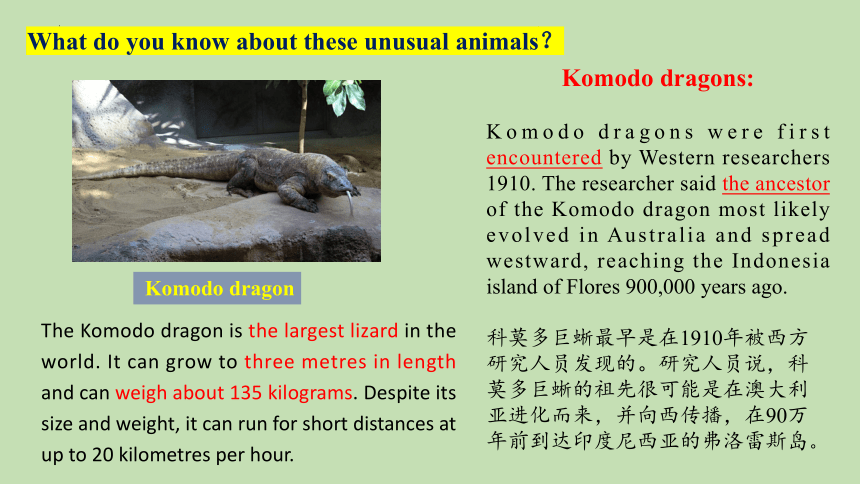
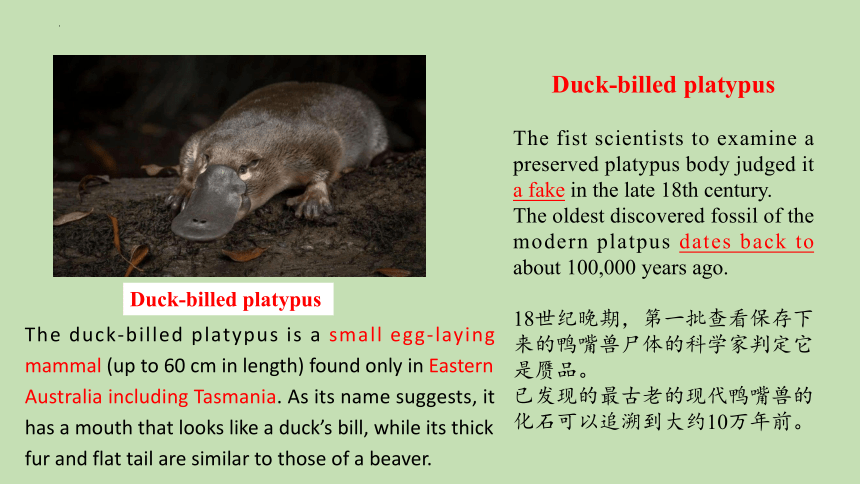
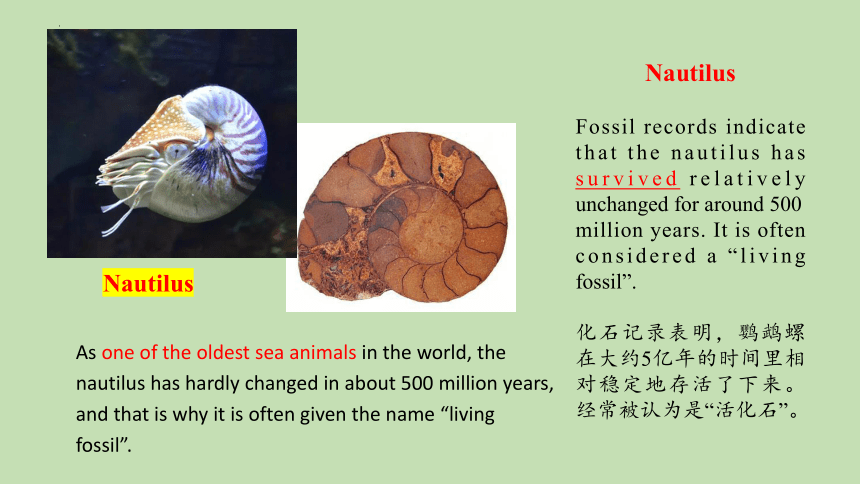

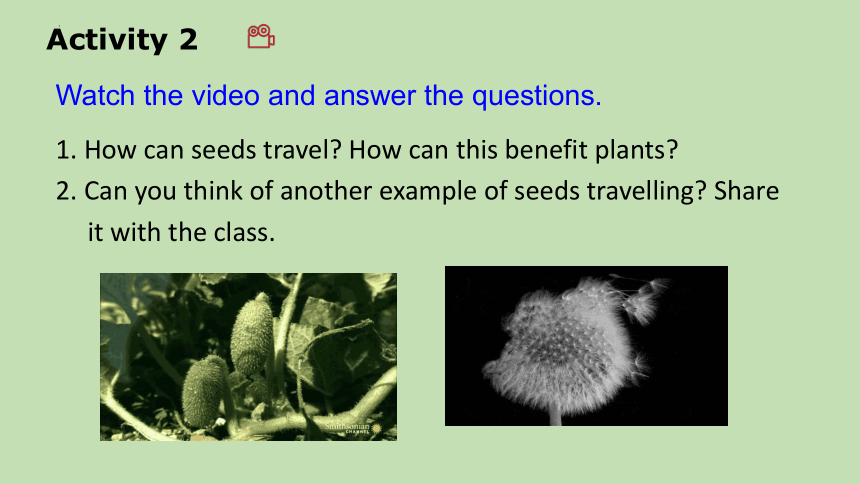
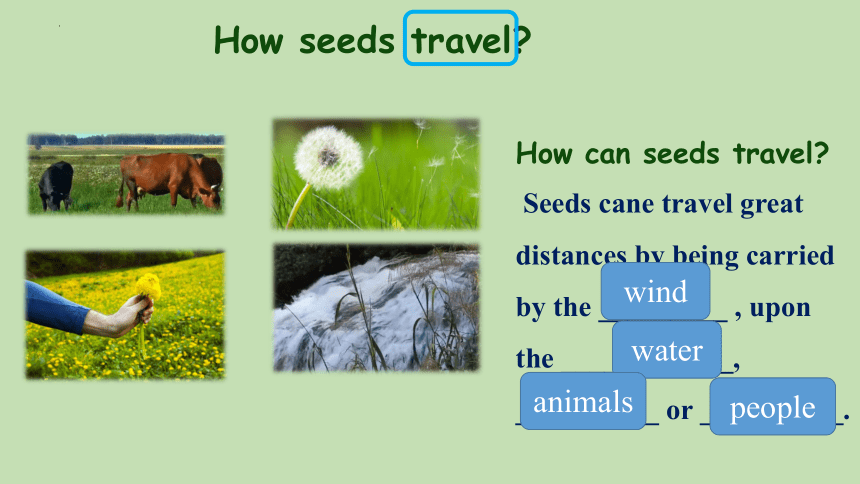
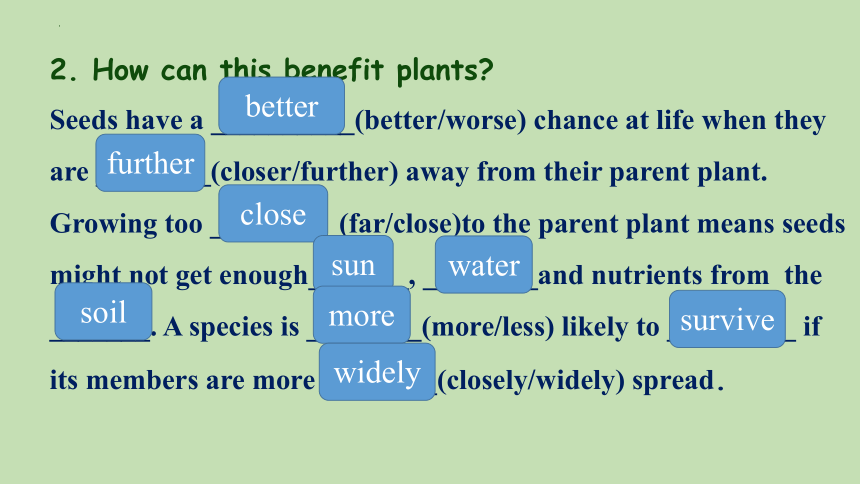
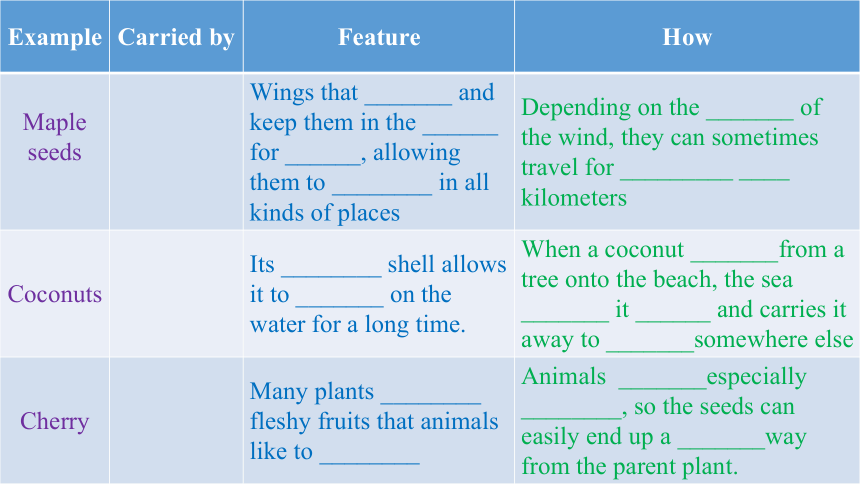
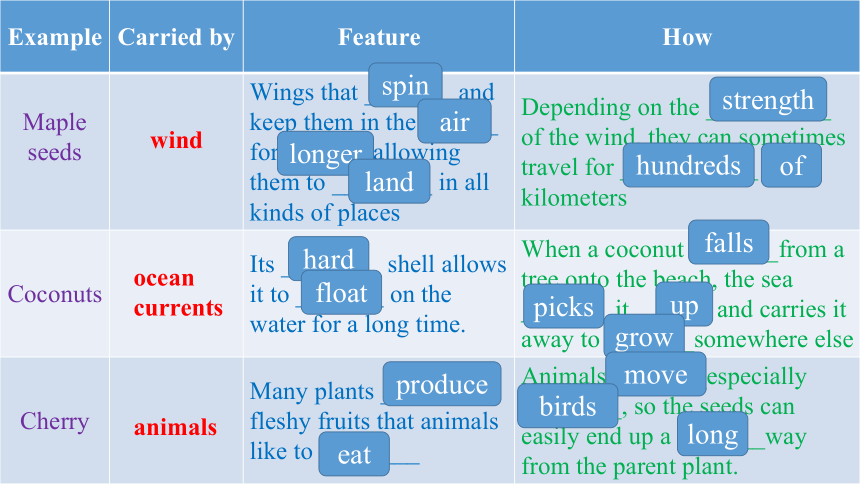
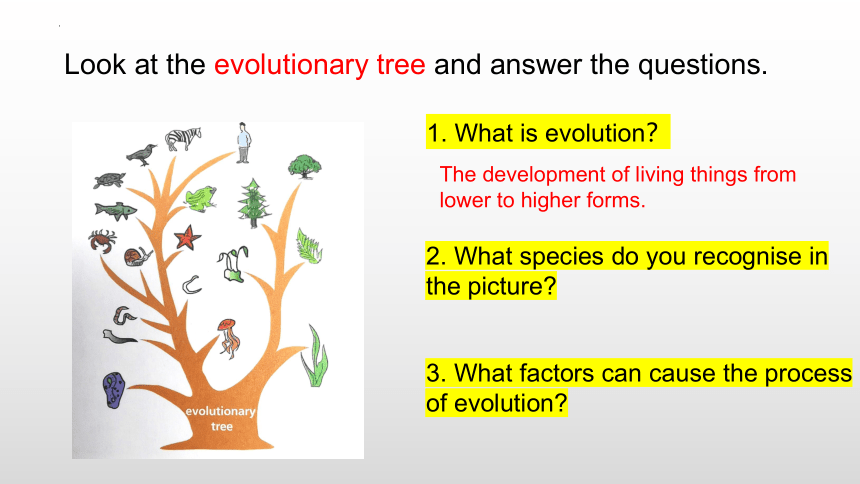

文档简介
Unit 5 Revealing nature
What do you know about these unusual animals?
Komodo dragon
Komodo dragons:
Komodo dragons were first encountered by Western researchers 1910. The researcher said the ancestor of the Komodo dragon most likely evolved in Australia and spread westward, reaching the Indonesia island of Flores 900,000 years ago.
科莫多巨蜥最早是在1910年被西方研究人员发现的。研究人员说,科莫多巨蜥的祖先很可能是在澳大利亚进化而来,并向西传播,在90万年前到达印度尼西亚的弗洛雷斯岛。
The Komodo dragon is the largest lizard in the world. It can grow to three metres in length and can weigh about 135 kilograms. Despite its size and weight, it can run for short distances at up to 20 kilometres per hour.
Duck-billed platypus
The fist scientists to examine a preserved platypus body judged it a fake in the late 18th century.
The oldest discovered fossil of the modern platpus dates back to about 100,000 years ago.
18世纪晚期,第一批查看保存下来的鸭嘴兽尸体的科学家判定它是赝品。
已发现的最古老的现代鸭嘴兽的化石可以追溯到大约10万年前。
Duck-billed platypus
The duck-billed platypus is a small egg-laying mammal (up to 60 cm in length) found only in Eastern Australia including Tasmania. As its name suggests, it has a mouth that looks like a duck’s bill, while its thick fur and flat tail are similar to those of a beaver.
Nautilus
Fossil records indicate that the nautilus has survived relatively unchanged for around 500 million years. It is often considered a “living fossil”.
化石记录表明,鹦鹉螺在大约5亿年的时间里相对稳定地存活了下来。经常被认为是“活化石”。
Nautilus
As one of the oldest sea animals in the world, the nautilus has hardly changed in about 500 million years, and that is why it is often given the name “living fossil”.
Activity 1
Look at the page from a science magazine and answer the questions.
1. What do you know about these animals?
What makes them special?
2. What other similar animals do you know about? Share your knowledge with the class.
They are all species that survived for thousands of years on earth; They are old and rare (unusual).
Jellyfish(水母)Jellyfish are soft-bodied,free-swimming aquatic(水生的)animals with an umbrella-shaped bell.They are found in every ocean.
1. How can seeds travel? How can this benefit plants?
2. Can you think of another example of seeds travelling? Share it with the class.
Watch the video and answer the questions.
Activity 2
How seeds travel?
How can seeds travel?
Seeds cane travel great distances by being carried by the _________ , upon the ____________, __________ or __________.
wind
water
animals
people
2. How can this benefit plants?
Seeds have a __________(better/worse) chance at life when they are ________(closer/further) away from their parent plant. Growing too _________(far/close)to the parent plant means seeds might not get enough_______, ________and nutrients from the _______. A species is ________(more/less) likely to _________ if its members are more ________(closely/widely) spread.
better
further
close
sun
water
soil
more
survive
widely
{5C22544A-7EE6-4342-B048-85BDC9FD1C3A}Example
Carried by
Feature
How
Maple seeds
Wings that _______ and keep them in the ______ for ______, allowing them to ________ in all kinds of places
Depending on the _______ of the wind, they can sometimes travel for _________ ____ kilometers
Coconuts
Its ________ shell allows it to _______ on the water for a long time.
When a coconut _______from a tree onto the beach, the sea _______ it ______ and carries it away to _______somewhere else
Cherry
Many plants ________ fleshy fruits that animals like to ________
Animals _______especially ________, so the seeds can easily end up a _______way from the parent plant.
{5C22544A-7EE6-4342-B048-85BDC9FD1C3A}Example
Carried by
Feature
How
Maple seeds
Wings that _______ and keep them in the ______ for ______, allowing them to ________ in all kinds of places
Depending on the __________ of the wind, they can sometimes travel for ___________ ____ kilometers
Coconuts
Its ________ shell allows it to _______ on the water for a long time.
When a coconut _______from a tree onto the beach, the sea _______ it ______ and carries it away to _______somewhere else
Cherry
Many plants ________ fleshy fruits that animals like to ________
Animals _______especially ________, so the seeds can easily end up a _______way from the parent plant.
wind
ocean
currents
animals
spin
air
longer
land
strength
hundreds
of
hard
float
falls
picks
up
grow
produce
eat
move
birds
long
Look at the evolutionary tree and answer the questions.
1. What is evolution?
2. What species do you recognise in the picture?
3. What factors can cause the process of evolution?
The development of living things from lower to higher forms.
2. What species do you recognise in the picture?
paramecium 草履虫(单细胞生物)
jellyfish 水母(腔肠动物)
flatworm(扁形动物)
earthworm 蚯蚓(环节动物)
snail 蜗牛(软体动物)
crab 螃蟹(节肢动物)
starfish(棘皮动物)
fish(鱼类)
frog 青蛙(两栖动物)
turtle 海龟(爬行动物)
bird(鸟类)
zebra 斑马(哺乳动物)
human(人类)
algae(藻类)
moss(苔藓)
fern (蕨类)
gymnosperms(裸子植物)
angiosperm(被子植物)
horsehair worm(线形动物)
3. What factors can cause the process of evolution?
The ever-changing environment of nature;
genetic mutation...
population immigration;
natural competition;
Darwin's Theory of Evolution is one of the basic foundations of modern science. It shows that plants and animals can change over time. The changes are usually small and difficult to detect, but they add up over many generations and can result in new species.
The British biologist, naturalist and the founder of Theory of Evolution.
In his early years, he sailed around the world on the Beagle for five years, and observed and collected a lot of animals, plants and geological structures. He published the Origin of Species and put forward the theory of biological evolution.
Charles Robert Darwin
Feb 12th, 1809—Apr 19th, 1882
"Theory of Evolution" as one of the three major discoveries of natural science in the 19th century (the other two are cell theory and the law of conservation and transformation of energy), which has made outstanding contributions to mankind.
A Journey of Discovery
The structure
1
2--5
The text is organized in order of____ .
Para___
Para___
Para 6-7
time
Before
the journey
During
the journey
Decide what type of essay it is?
It is a narrative essay.
Darwin's interest in various living things made him a great naturalist.
Darwin's journey on the Beagle inspired his Theory of Evolution.
Darwin went on a journey to confirm his theory that humans had evolved over time.
Choose the main idea of the passage and give your reasons.
1.The captain of the ship, the?Beagle, wanted someone who would “profit by the opportunity of visiting distant countries yet little known”. The person who answered the call was not the captain’s first choice. It was a young man who had left medical school without completing his degree. What’s more, he had recently received a letter from his father predicting that he would be “a disgrace to yourself and all your family”. Despite all this, his adventures on this ship would lead to one of the most important scientific discoveries of all time.
He was not the captain’s first choice.
He was a disgrace to himself and all his family.
He was a young man who had left medical school without completing his degree.
2.The young man in question, Charles Darwin, was a geologist and naturalist, fascinated by rocks, plants and animals. He left England on the ship, the?Beagle, in 1831. The journey gave him the chance to study various living things in their natural environments. After Darwin had spent some time in South America, his room on the ship was crowded with samples of the plants and animals he had collected. As he studied these, he asked himself the question: how did different species come to exist?
Charles Darwin was a geologist and naturalist, fascinated by rocks, plants and animals.
How did different species come to exist?
Samples of the plants and animals
All species had appeared on Earth at the same time, and had not changed since.
Animals evolved as they adapted to their changing environments.
To look for more evidence.
3.At that time, people believed that all species had appeared on Earth at the same time, and had not changed since. But Darwin began to think differently. He noticed that some species of animals were very similar to each other. Maybe animals evolved as they adapted to their changing environments? It was just an idea, but enough to inspire Darwin to look for more evidence.
Darwin noticed finches’ beaks had evolved according to what food was available on that particular island.
New species of plants and animals evolved from earlier ancestors.
4.When the?Beagle?reached the Galápagos Islands in 1835, Darwin saw a variety of new species, but it was the birds that interested him the most. Darwin noticed that there was a difference between the finches on each of the islands. It seemed their beaks had evolved according to what food was available on that particular island.
5.Darwin suspected that the finches had evolved from a common ancestor, which had arrived on the islands a long time before. Over time, it had slowly evolved into many new species. And that was the answer to how new species of plants and animals came to exist: they evolved from earlier ancestors.
Evidence
A _________ ancestor
__________ into different species
common
evolve
6.It was a completely new idea—a theory of evolution. Darwin explained this theory in his book,?On the Origin of Species. It was not published until 1859 and immediately caused a storm. Many people refused to believe that living things, including humans, had evolved from lower forms of life. They were shocked. But Darwin’s scientific studies were so convincing that more and more people started to believe his theory.
7.Today,?On the Origin of Species?is regarded as one of the most important works ever written. It has changed ideas about life on Earth forever. And it all began with the journey on the Beagle.
A theory of evolution.
Darwin explained this theory in his book, On the Origin of Species.
On the Origin of Species is regarded as one of the most important works ever written. It has changed ideas about life on Earth forever.
Many people refused to believe. They were shocked. Later, more and more people started to believe his theory.
asked himself a question(generated an idea)
answered the question(developed an idea)
published the book (proposed a theory)
started his journey
Number the puzzle pieces in order.
Organise information from the passage and complete them.
1
4
2
3
5
Darwin studied____________________________________________
_________________________________________________________.
He noticed that some species of animals were __________________
_______.
ON HIS JOURNEY
1
various living things in their natural environments and samples of the plants and animals he had collected?
very similar to each
other
GENERATE IDEAS
2
Darwin asked the questions:
How did different species _____________?
________________________________________________________
________________________
come to exist
Maybe animals evolved as they adapted to their changing environments?
LOOK FOR MORE EVIDENCE
3
DEVELOP IDEAS
4
On the Galapagos Island:
He noticed _______________________________________________
_____________________________.
It seemed the beaks ________________________________________
______________________________________.
that there was a difference between the finches on each of the islands
had evolved according to what food was available on that particular island
Darwin suspected that the finches ____________________________
__________________________________________________________
and it had _______________________________________.
had evolved from a common ancestor, which had arrived on the islands a long time before
slowly evolved into many new species
PROPOSE A THEROY
5
The theory of Evolution: living things, including humans, _____________________________________________________.
had evolved from lower forms of life
Think and share
What kind of person was Darwin according to the passage?
What have you learnt about the spirit of scientific exploration?
Darwin was a determined man. He had strong curiosity and interests in science and was good at thinking and making discoveries.
What do you know about these unusual animals?
Komodo dragon
Komodo dragons:
Komodo dragons were first encountered by Western researchers 1910. The researcher said the ancestor of the Komodo dragon most likely evolved in Australia and spread westward, reaching the Indonesia island of Flores 900,000 years ago.
科莫多巨蜥最早是在1910年被西方研究人员发现的。研究人员说,科莫多巨蜥的祖先很可能是在澳大利亚进化而来,并向西传播,在90万年前到达印度尼西亚的弗洛雷斯岛。
The Komodo dragon is the largest lizard in the world. It can grow to three metres in length and can weigh about 135 kilograms. Despite its size and weight, it can run for short distances at up to 20 kilometres per hour.
Duck-billed platypus
The fist scientists to examine a preserved platypus body judged it a fake in the late 18th century.
The oldest discovered fossil of the modern platpus dates back to about 100,000 years ago.
18世纪晚期,第一批查看保存下来的鸭嘴兽尸体的科学家判定它是赝品。
已发现的最古老的现代鸭嘴兽的化石可以追溯到大约10万年前。
Duck-billed platypus
The duck-billed platypus is a small egg-laying mammal (up to 60 cm in length) found only in Eastern Australia including Tasmania. As its name suggests, it has a mouth that looks like a duck’s bill, while its thick fur and flat tail are similar to those of a beaver.
Nautilus
Fossil records indicate that the nautilus has survived relatively unchanged for around 500 million years. It is often considered a “living fossil”.
化石记录表明,鹦鹉螺在大约5亿年的时间里相对稳定地存活了下来。经常被认为是“活化石”。
Nautilus
As one of the oldest sea animals in the world, the nautilus has hardly changed in about 500 million years, and that is why it is often given the name “living fossil”.
Activity 1
Look at the page from a science magazine and answer the questions.
1. What do you know about these animals?
What makes them special?
2. What other similar animals do you know about? Share your knowledge with the class.
They are all species that survived for thousands of years on earth; They are old and rare (unusual).
Jellyfish(水母)Jellyfish are soft-bodied,free-swimming aquatic(水生的)animals with an umbrella-shaped bell.They are found in every ocean.
1. How can seeds travel? How can this benefit plants?
2. Can you think of another example of seeds travelling? Share it with the class.
Watch the video and answer the questions.
Activity 2
How seeds travel?
How can seeds travel?
Seeds cane travel great distances by being carried by the _________ , upon the ____________, __________ or __________.
wind
water
animals
people
2. How can this benefit plants?
Seeds have a __________(better/worse) chance at life when they are ________(closer/further) away from their parent plant. Growing too _________(far/close)to the parent plant means seeds might not get enough_______, ________and nutrients from the _______. A species is ________(more/less) likely to _________ if its members are more ________(closely/widely) spread.
better
further
close
sun
water
soil
more
survive
widely
{5C22544A-7EE6-4342-B048-85BDC9FD1C3A}Example
Carried by
Feature
How
Maple seeds
Wings that _______ and keep them in the ______ for ______, allowing them to ________ in all kinds of places
Depending on the _______ of the wind, they can sometimes travel for _________ ____ kilometers
Coconuts
Its ________ shell allows it to _______ on the water for a long time.
When a coconut _______from a tree onto the beach, the sea _______ it ______ and carries it away to _______somewhere else
Cherry
Many plants ________ fleshy fruits that animals like to ________
Animals _______especially ________, so the seeds can easily end up a _______way from the parent plant.
{5C22544A-7EE6-4342-B048-85BDC9FD1C3A}Example
Carried by
Feature
How
Maple seeds
Wings that _______ and keep them in the ______ for ______, allowing them to ________ in all kinds of places
Depending on the __________ of the wind, they can sometimes travel for ___________ ____ kilometers
Coconuts
Its ________ shell allows it to _______ on the water for a long time.
When a coconut _______from a tree onto the beach, the sea _______ it ______ and carries it away to _______somewhere else
Cherry
Many plants ________ fleshy fruits that animals like to ________
Animals _______especially ________, so the seeds can easily end up a _______way from the parent plant.
wind
ocean
currents
animals
spin
air
longer
land
strength
hundreds
of
hard
float
falls
picks
up
grow
produce
eat
move
birds
long
Look at the evolutionary tree and answer the questions.
1. What is evolution?
2. What species do you recognise in the picture?
3. What factors can cause the process of evolution?
The development of living things from lower to higher forms.
2. What species do you recognise in the picture?
paramecium 草履虫(单细胞生物)
jellyfish 水母(腔肠动物)
flatworm(扁形动物)
earthworm 蚯蚓(环节动物)
snail 蜗牛(软体动物)
crab 螃蟹(节肢动物)
starfish(棘皮动物)
fish(鱼类)
frog 青蛙(两栖动物)
turtle 海龟(爬行动物)
bird(鸟类)
zebra 斑马(哺乳动物)
human(人类)
algae(藻类)
moss(苔藓)
fern (蕨类)
gymnosperms(裸子植物)
angiosperm(被子植物)
horsehair worm(线形动物)
3. What factors can cause the process of evolution?
The ever-changing environment of nature;
genetic mutation...
population immigration;
natural competition;
Darwin's Theory of Evolution is one of the basic foundations of modern science. It shows that plants and animals can change over time. The changes are usually small and difficult to detect, but they add up over many generations and can result in new species.
The British biologist, naturalist and the founder of Theory of Evolution.
In his early years, he sailed around the world on the Beagle for five years, and observed and collected a lot of animals, plants and geological structures. He published the Origin of Species and put forward the theory of biological evolution.
Charles Robert Darwin
Feb 12th, 1809—Apr 19th, 1882
"Theory of Evolution" as one of the three major discoveries of natural science in the 19th century (the other two are cell theory and the law of conservation and transformation of energy), which has made outstanding contributions to mankind.
A Journey of Discovery
The structure
1
2--5
The text is organized in order of____ .
Para___
Para___
Para 6-7
time
Before
the journey
During
the journey
Decide what type of essay it is?
It is a narrative essay.
Darwin's interest in various living things made him a great naturalist.
Darwin's journey on the Beagle inspired his Theory of Evolution.
Darwin went on a journey to confirm his theory that humans had evolved over time.
Choose the main idea of the passage and give your reasons.
1.The captain of the ship, the?Beagle, wanted someone who would “profit by the opportunity of visiting distant countries yet little known”. The person who answered the call was not the captain’s first choice. It was a young man who had left medical school without completing his degree. What’s more, he had recently received a letter from his father predicting that he would be “a disgrace to yourself and all your family”. Despite all this, his adventures on this ship would lead to one of the most important scientific discoveries of all time.
He was not the captain’s first choice.
He was a disgrace to himself and all his family.
He was a young man who had left medical school without completing his degree.
2.The young man in question, Charles Darwin, was a geologist and naturalist, fascinated by rocks, plants and animals. He left England on the ship, the?Beagle, in 1831. The journey gave him the chance to study various living things in their natural environments. After Darwin had spent some time in South America, his room on the ship was crowded with samples of the plants and animals he had collected. As he studied these, he asked himself the question: how did different species come to exist?
Charles Darwin was a geologist and naturalist, fascinated by rocks, plants and animals.
How did different species come to exist?
Samples of the plants and animals
All species had appeared on Earth at the same time, and had not changed since.
Animals evolved as they adapted to their changing environments.
To look for more evidence.
3.At that time, people believed that all species had appeared on Earth at the same time, and had not changed since. But Darwin began to think differently. He noticed that some species of animals were very similar to each other. Maybe animals evolved as they adapted to their changing environments? It was just an idea, but enough to inspire Darwin to look for more evidence.
Darwin noticed finches’ beaks had evolved according to what food was available on that particular island.
New species of plants and animals evolved from earlier ancestors.
4.When the?Beagle?reached the Galápagos Islands in 1835, Darwin saw a variety of new species, but it was the birds that interested him the most. Darwin noticed that there was a difference between the finches on each of the islands. It seemed their beaks had evolved according to what food was available on that particular island.
5.Darwin suspected that the finches had evolved from a common ancestor, which had arrived on the islands a long time before. Over time, it had slowly evolved into many new species. And that was the answer to how new species of plants and animals came to exist: they evolved from earlier ancestors.
Evidence
A _________ ancestor
__________ into different species
common
evolve
6.It was a completely new idea—a theory of evolution. Darwin explained this theory in his book,?On the Origin of Species. It was not published until 1859 and immediately caused a storm. Many people refused to believe that living things, including humans, had evolved from lower forms of life. They were shocked. But Darwin’s scientific studies were so convincing that more and more people started to believe his theory.
7.Today,?On the Origin of Species?is regarded as one of the most important works ever written. It has changed ideas about life on Earth forever. And it all began with the journey on the Beagle.
A theory of evolution.
Darwin explained this theory in his book, On the Origin of Species.
On the Origin of Species is regarded as one of the most important works ever written. It has changed ideas about life on Earth forever.
Many people refused to believe. They were shocked. Later, more and more people started to believe his theory.
asked himself a question(generated an idea)
answered the question(developed an idea)
published the book (proposed a theory)
started his journey
Number the puzzle pieces in order.
Organise information from the passage and complete them.
1
4
2
3
5
Darwin studied____________________________________________
_________________________________________________________.
He noticed that some species of animals were __________________
_______.
ON HIS JOURNEY
1
various living things in their natural environments and samples of the plants and animals he had collected?
very similar to each
other
GENERATE IDEAS
2
Darwin asked the questions:
How did different species _____________?
________________________________________________________
________________________
come to exist
Maybe animals evolved as they adapted to their changing environments?
LOOK FOR MORE EVIDENCE
3
DEVELOP IDEAS
4
On the Galapagos Island:
He noticed _______________________________________________
_____________________________.
It seemed the beaks ________________________________________
______________________________________.
that there was a difference between the finches on each of the islands
had evolved according to what food was available on that particular island
Darwin suspected that the finches ____________________________
__________________________________________________________
and it had _______________________________________.
had evolved from a common ancestor, which had arrived on the islands a long time before
slowly evolved into many new species
PROPOSE A THEROY
5
The theory of Evolution: living things, including humans, _____________________________________________________.
had evolved from lower forms of life
Think and share
What kind of person was Darwin according to the passage?
What have you learnt about the spirit of scientific exploration?
Darwin was a determined man. He had strong curiosity and interests in science and was good at thinking and making discoveries.
